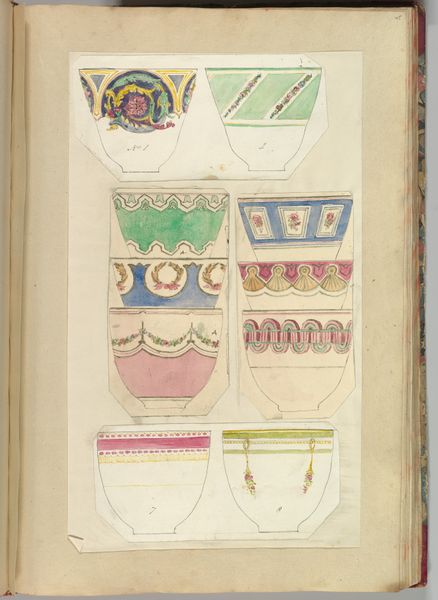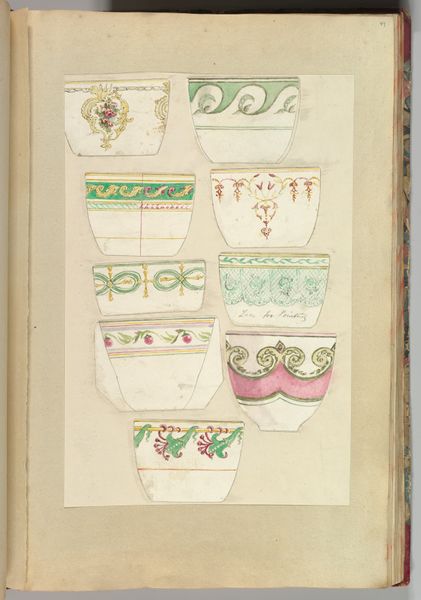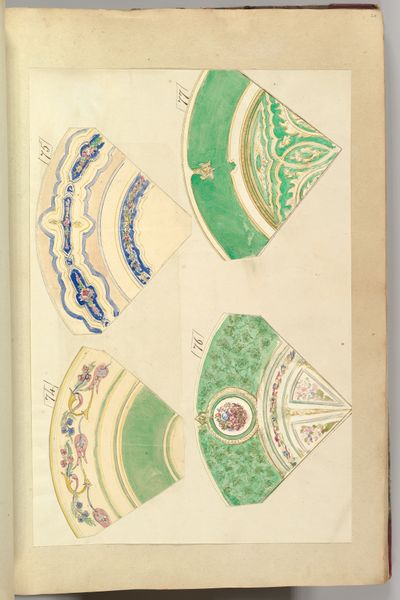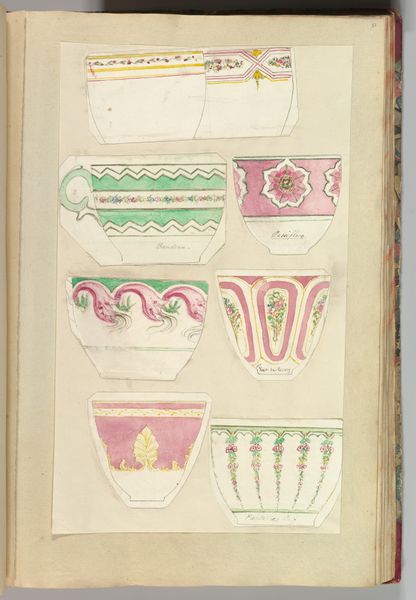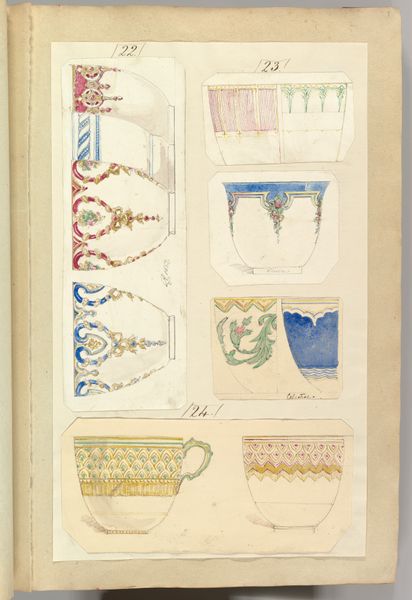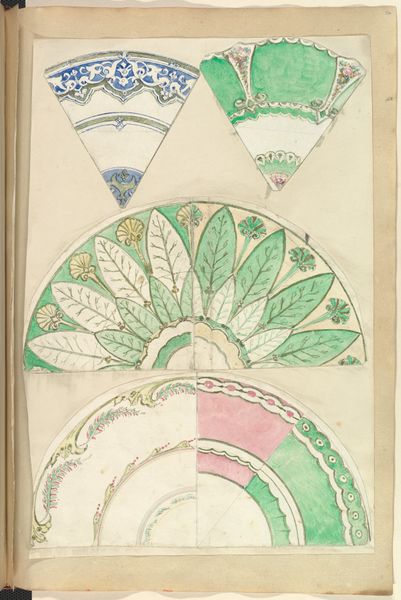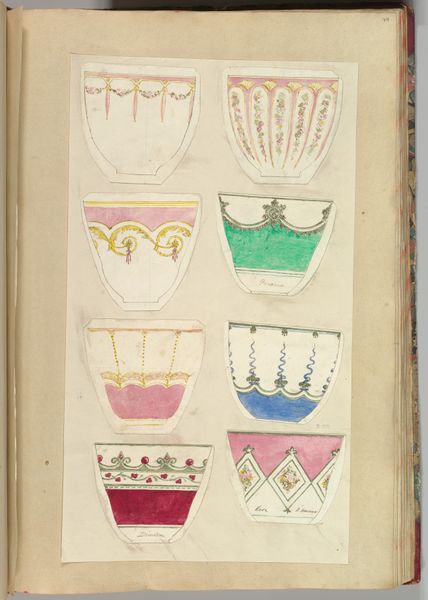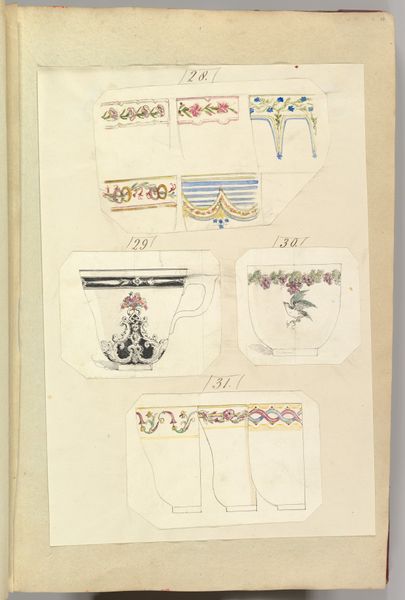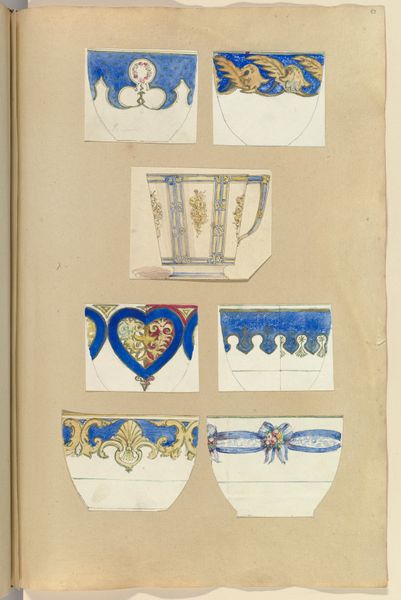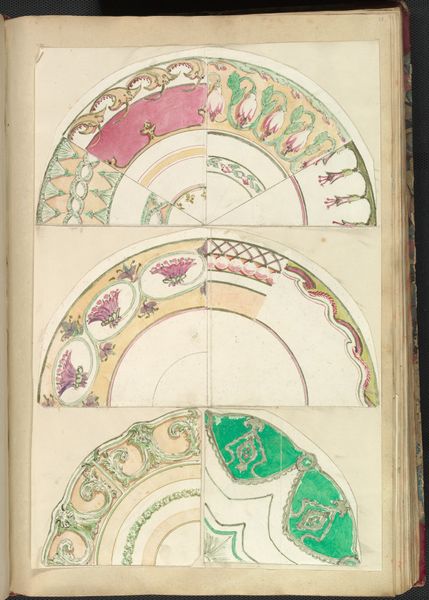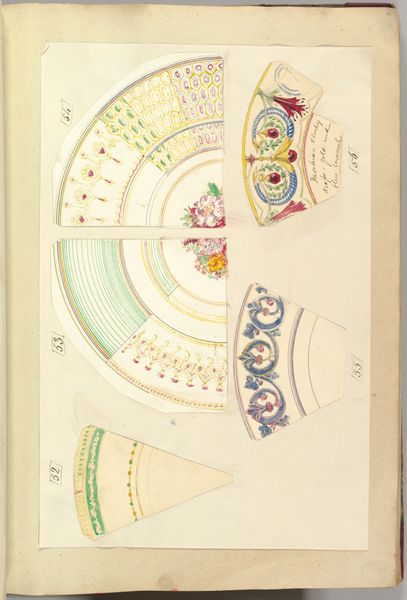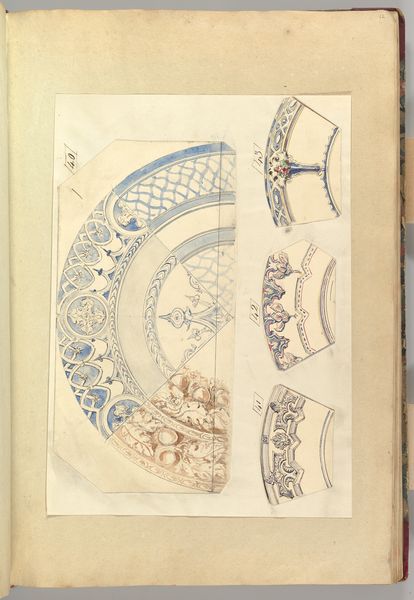
Seven Designs for Decorated Plates 1845 - 1855
0:00
0:00
drawing, ornament, coloured-pencil, print
#
drawing
#
ornament
#
coloured-pencil
# print
#
coloured pencil
#
decorative-art
Dimensions: sheet: 16 3/4 x 11 7/16 in. (42.5 x 29 cm)
Copyright: Public Domain
Curator: Look at these intricate fan designs, all together on one page. Alfred Henry Forrester rendered "Seven Designs for Decorated Plates" sometime between 1845 and 1855. Editor: My first thought is how delicate they appear, almost like illustrations from a fairytale. There is a Rococo sensibility—that sense of playfulness but also exclusivity. Curator: It’s compelling how motifs reappear across the designs, even as colors and arrangements shift. I wonder about their significance. Is that heraldic flower, displayed on some of them, meant to invoke aristocracy and its privileges? The wreaths might refer to fertility or celebration... Editor: Undoubtedly. Remember this was an era marked by widening social divisions, a rapidly industrializing society. An object like a fan becomes a statement – it can denote belonging and cultural capital. I also note how contained all of these "plates" designs look—as a symbol, are they communicating repression? I cannot but note that fan-making has historically given work to women. Curator: Absolutely, class and gender intersect in the image. I notice that Forrester’s details are almost jewel-like—ruby, sapphire, gold—referencing the colors associated with the crowns and robes. Does he want to elevate this, hinting at a nostalgia for a noble past? Editor: Or is this perhaps critiquing it? By displaying different types of arrangements of plates, and styles, perhaps it wants to democratize art and offer alternatives in design for people from different social circles? I wonder who these plates would have been crafted for, were these meant as real, viable blueprints for manufacture? Who would the buyers have been? And were the women the true purchasers here? Curator: An important point! Perhaps the most interesting part of understanding this piece is deconstructing it through the psychology behind ornamentation and decoration... Editor: Right. And its placement within its tumultuous social and political climate. What kind of societal values were attached to the design of these objects? I guess in art history we must consider always context to better understand a creation such as this.
Comments
No comments
Be the first to comment and join the conversation on the ultimate creative platform.
